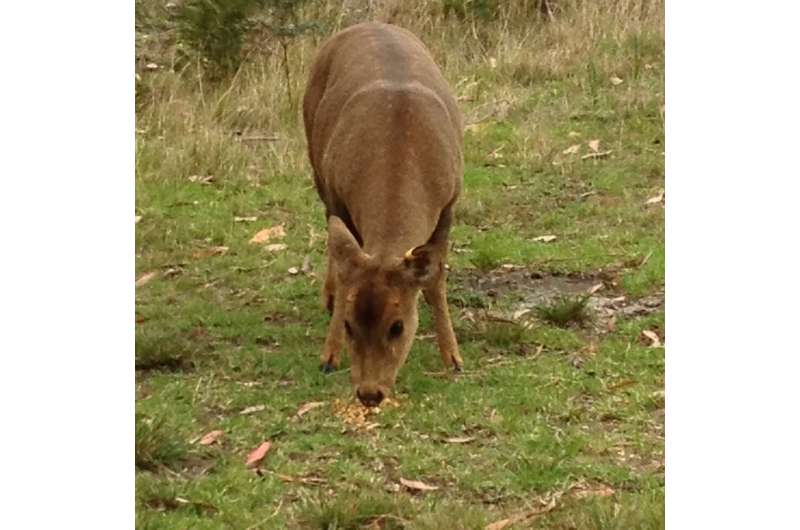Victorian hog deer genetics revealed

Australian researchers looking for a genetic lifeline to endangered hog deer species endemic to Pakistan, northern India and mainland southeast Asia have found widespread hybridization of the species in Victoria.
The La Trobe led study, partially funded by the Game Management Authority and published recently in Ecology and Evolution, has revealed hog deer introduced to Victoria in the 1860s are comprised entirely of hog deer and chital hybrids within the Gippsland region.
Lead researcher Erin Hill, from the School of Life Sciences at La Trobe University, said the study is the first to show hog deer in Victoria are hybrids.
"Exactly when the hybridization occurred is unknown. It may have occurred in their native range, in captivity prior to release, or following release in Victoria, as chital deer were introduced at about the same time," Ms Hill said.
"We examined and sequenced the genetic makeup of 80 deer in Victoria and found no trace of pure hog deer living in the wild.
Associate Professor Jan Strugnell, from James Cook University, also an author on the study, said that established chital populations in Australia only exist in pockets in Queensland and New South Wales.
"Given chital species were eradicated in Victoria almost 100 years ago, it's clear this hybrid species has survived over generations because it is fertile."
Ms Hill said that the discovery of widespread hybridisation could affect the management of hog deer in Victoria.
"This is due to the long-held belief that this introduced species could play an essential role in the conservation of the species throughout its native range," Ms Hill said.
"Victoria is home to one of the few remaining stable populations of hog deer left in the world."
Ms Hill said it is vital to stress the importance of the introduced species for conservation, despite their newly discovered hybrid status.
"Our study has revealed that translocations of introduced Victorian deer back into the native range would likely need to be restricted to areas where hog deer and chital co-exist naturally," Ms Hill said.
"This would include the northern regions of India, where native chital and hog deer are endangered due to overhunting and habitat loss."
Ms Hill said more research is needed before translocations can occur.
"The next steps are to assess the hybridization rate of hog deer and chital within the native range in India, and to further explore the idea of translocating Victorian hog deer back to the native range by measuring the levels of genetic variation within the Victorian population," Ms Hill said.
"Genetic variation is important as it allows individuals to adapt to their environment, and so it is important to reintroduce as much genetic variation as possible back into the native range to ensure long-term survival of the species."
More information: Erin Hill et al. Widespread hybridization in the introduced hog deer population of Victoria, Australia, and its implications for conservation, Ecology and Evolution (2019). DOI: 10.1002/ece3.5603
Journal information: Ecology and Evolution
Provided by La Trobe University


















